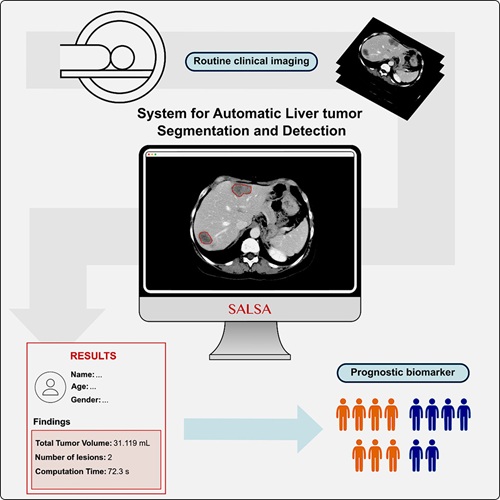Atrophy in Thalamus Can Predict Multiple Sclerosis
|
By MedImaging International staff writers Posted on 28 May 2013 |
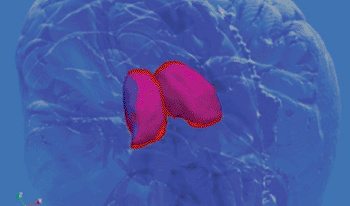
Image: Composite 3D view of the thalamus of healthy controls (outlined in red) and MS patients (magenta). The whole thalamus is generally smaller in MS due to atrophy, and is also shifted (as seen in blue) slightly beyond the position of the normal thalamus due to atrophy of other parts of the brain (Photo courtesy of the University of Buffalo).
Magnetic resonance imaging (MRI) measurements of atrophy in a vital area of the brain are an accurate predictor of multiple sclerosis (MS), according to new findings. These measurements offer an improvement over current methods for evaluating patients at risk for MS.
MS develops as the body’s immune system attacks and damages myelin, the protective layer of fatty tissue that surrounds nerve cells within the brain and spinal cord. Symptoms include visual disturbances, muscle weakness, and trouble with coordination and balance. People with severe cases can lose the ability to speak or walk. About 85% of people with MS undergo a first, short-term neurologic episode known as clinically isolated syndrome (CIS). A definitive MS diagnosis is based on a combination of factors, including neurologic exams, medical history, development of a second clinical event, and detection of new and broadening lesions with contrast-enhanced or T2-weighted MRI.
The study’s findings were published online April 23, 2013, in the journal Radiology. “For some time we’ve been trying to understand MRI biomarkers that predict MS development from the first onset of the disease,” said Robert Zivadinov, MD, PhD, FAAN, from the Buffalo Neuroimaging Analysis Center of the University at Buffalo (NY, USA). “In the last couple of years, research has become much more focused on the thalamus.”
Recent studies found atrophy of the thalamus in all different MS disease types and detected thalamic volume loss in pediatric MS patients. “Thalamic atrophy may become a hallmark of how we look at the disease and how we develop drugs to treat it,” Dr. Zivadinov said.
Dr. Zivadinov and colleagues, for the study, examined the association between the development of thalamic atrophy and conversion to clinically confirmed MS. “One of the most important reasons for the study was to understand which regions of the brain are most predictive of a second clinical attack,” he said. “No one has really looked at this over the long term in a clinical trial.”
The researchers used contrast-enhanced MRI for initial assessment of 216 CIS patients. They performed follow-up scans at six months, one year, and two years. Over two years, 92 of 216 patients, or 42.6%, converted to clinically definite MS. Decreases in thalamic volume and increase in lateral ventricle volumes were the only MRI measures independently linked with the development of clinically definite MS. “First, these results show that atrophy of the thalamus is associated with MS,” Dr. Zivadinov said. “Second, they show that thalamic atrophy is a better predictor of clinically definite MS than accumulation of T2-weighted and contrast-enhanced lesions.”
The findings suggest that measurement of thalamic atrophy and increase in ventricular size may help identify patients at high risk for conversion to clinically definite MS in future clinical trials involving CIS patients. “Thalamic atrophy is an ideal MRI biomarker because it’s detectable at very early stage,” Dr. Zivadinov said. “It has very good predictive value, and you will see it used more and more in the future.”
The researchers continue to monitor the study group, with plans to publish findings from the four-year follow-up in 2015. They are also trying to determine more about the physiology of the thalamic involvement in MS. “The next step is to look at where the lesions develop over two years with respect to the location of the atrophy,” Dr. Zivadinov said. “Thalamic atrophy cannot be explained entirely by accumulation of lesions; there must be an independent component that leads to loss of thalamus.”
Related Links:
University at Buffalo
MS develops as the body’s immune system attacks and damages myelin, the protective layer of fatty tissue that surrounds nerve cells within the brain and spinal cord. Symptoms include visual disturbances, muscle weakness, and trouble with coordination and balance. People with severe cases can lose the ability to speak or walk. About 85% of people with MS undergo a first, short-term neurologic episode known as clinically isolated syndrome (CIS). A definitive MS diagnosis is based on a combination of factors, including neurologic exams, medical history, development of a second clinical event, and detection of new and broadening lesions with contrast-enhanced or T2-weighted MRI.
The study’s findings were published online April 23, 2013, in the journal Radiology. “For some time we’ve been trying to understand MRI biomarkers that predict MS development from the first onset of the disease,” said Robert Zivadinov, MD, PhD, FAAN, from the Buffalo Neuroimaging Analysis Center of the University at Buffalo (NY, USA). “In the last couple of years, research has become much more focused on the thalamus.”
Recent studies found atrophy of the thalamus in all different MS disease types and detected thalamic volume loss in pediatric MS patients. “Thalamic atrophy may become a hallmark of how we look at the disease and how we develop drugs to treat it,” Dr. Zivadinov said.
Dr. Zivadinov and colleagues, for the study, examined the association between the development of thalamic atrophy and conversion to clinically confirmed MS. “One of the most important reasons for the study was to understand which regions of the brain are most predictive of a second clinical attack,” he said. “No one has really looked at this over the long term in a clinical trial.”
The researchers used contrast-enhanced MRI for initial assessment of 216 CIS patients. They performed follow-up scans at six months, one year, and two years. Over two years, 92 of 216 patients, or 42.6%, converted to clinically definite MS. Decreases in thalamic volume and increase in lateral ventricle volumes were the only MRI measures independently linked with the development of clinically definite MS. “First, these results show that atrophy of the thalamus is associated with MS,” Dr. Zivadinov said. “Second, they show that thalamic atrophy is a better predictor of clinically definite MS than accumulation of T2-weighted and contrast-enhanced lesions.”
The findings suggest that measurement of thalamic atrophy and increase in ventricular size may help identify patients at high risk for conversion to clinically definite MS in future clinical trials involving CIS patients. “Thalamic atrophy is an ideal MRI biomarker because it’s detectable at very early stage,” Dr. Zivadinov said. “It has very good predictive value, and you will see it used more and more in the future.”
The researchers continue to monitor the study group, with plans to publish findings from the four-year follow-up in 2015. They are also trying to determine more about the physiology of the thalamic involvement in MS. “The next step is to look at where the lesions develop over two years with respect to the location of the atrophy,” Dr. Zivadinov said. “Thalamic atrophy cannot be explained entirely by accumulation of lesions; there must be an independent component that leads to loss of thalamus.”
Related Links:
University at Buffalo
Latest Imaging IT News
- New Google Cloud Medical Imaging Suite Makes Imaging Healthcare Data More Accessible
- Global AI in Medical Diagnostics Market to Be Driven by Demand for Image Recognition in Radiology
- AI-Based Mammography Triage Software Helps Dramatically Improve Interpretation Process
- Artificial Intelligence (AI) Program Accurately Predicts Lung Cancer Risk from CT Images
- Image Management Platform Streamlines Treatment Plans
- AI-Based Technology for Ultrasound Image Analysis Receives FDA Approval
- AI Technology for Detecting Breast Cancer Receives CE Mark Approval
- Digital Pathology Software Improves Workflow Efficiency
- Patient-Centric Portal Facilitates Direct Imaging Access
- New Workstation Supports Customer-Driven Imaging Workflow
Channels
Radiography
view channel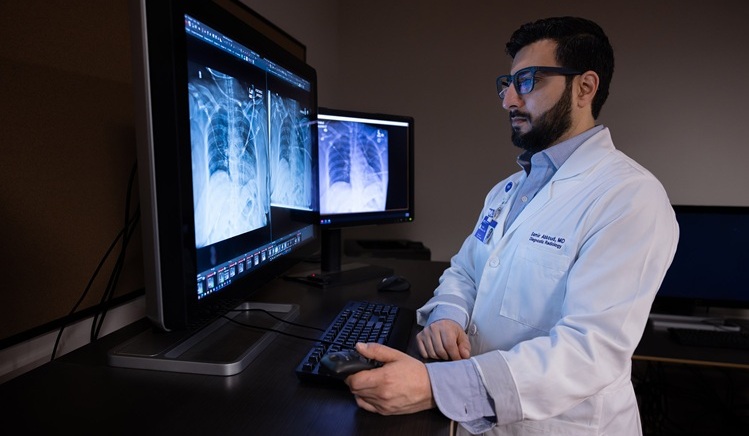
AI Radiology Tool Identifies Life-Threatening Conditions in Milliseconds
Radiology is emerging as one of healthcare’s most pressing bottlenecks. By 2033, the U.S. could face a shortage of up to 42,000 radiologists, even as imaging volumes grow by 5% annually.... Read more
Machine Learning Algorithm Identifies Cardiovascular Risk from Routine Bone Density Scans
A new study published in the Journal of Bone and Mineral Research reveals that an automated machine learning program can predict the risk of cardiovascular events and falls or fractures by analyzing bone... Read more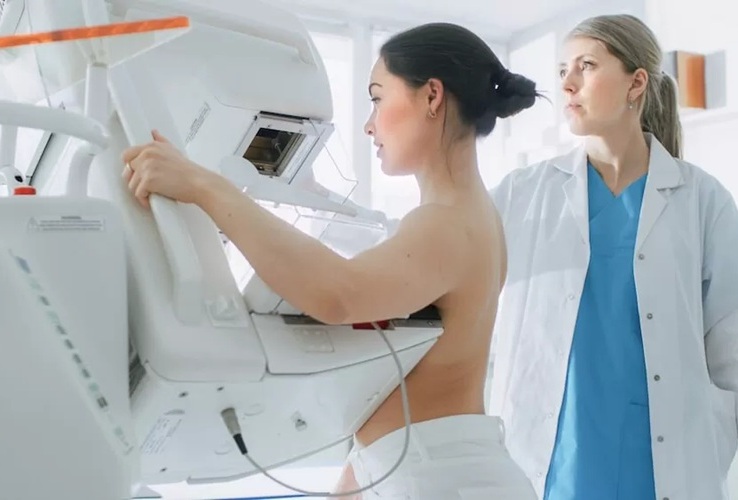
AI Improves Early Detection of Interval Breast Cancers
Interval breast cancers, which occur between routine screenings, are easier to treat when detected earlier. Early detection can reduce the need for aggressive treatments and improve the chances of better outcomes.... Read more
World's Largest Class Single Crystal Diamond Radiation Detector Opens New Possibilities for Diagnostic Imaging
Diamonds possess ideal physical properties for radiation detection, such as exceptional thermal and chemical stability along with a quick response time. Made of carbon with an atomic number of six, diamonds... Read moreMRI
view channel
New MRI Technique Reveals Hidden Heart Issues
Traditional exercise stress tests conducted within an MRI machine require patients to lie flat, a position that artificially improves heart function by increasing stroke volume due to gravity-driven blood... Read more
Shorter MRI Exam Effectively Detects Cancer in Dense Breasts
Women with extremely dense breasts face a higher risk of missed breast cancer diagnoses, as dense glandular and fibrous tissue can obscure tumors on mammograms. While breast MRI is recommended for supplemental... Read moreUltrasound
view channel
New Incision-Free Technique Halts Growth of Debilitating Brain Lesions
Cerebral cavernous malformations (CCMs), also known as cavernomas, are abnormal clusters of blood vessels that can grow in the brain, spinal cord, or other parts of the body. While most cases remain asymptomatic,... Read more.jpeg)
AI-Powered Lung Ultrasound Outperforms Human Experts in Tuberculosis Diagnosis
Despite global declines in tuberculosis (TB) rates in previous years, the incidence of TB rose by 4.6% from 2020 to 2023. Early screening and rapid diagnosis are essential elements of the World Health... Read moreNuclear Medicine
view channel
New Imaging Approach Could Reduce Need for Biopsies to Monitor Prostate Cancer
Prostate cancer is the second leading cause of cancer-related death among men in the United States. However, the majority of older men diagnosed with prostate cancer have slow-growing, low-risk forms of... Read more
Novel Radiolabeled Antibody Improves Diagnosis and Treatment of Solid Tumors
Interleukin-13 receptor α-2 (IL13Rα2) is a cell surface receptor commonly found in solid tumors such as glioblastoma, melanoma, and breast cancer. It is minimally expressed in normal tissues, making it... Read moreGeneral/Advanced Imaging
view channel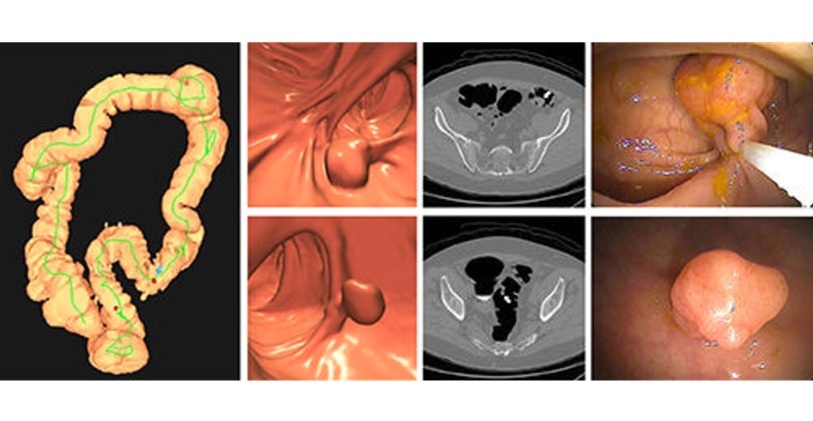
CT Colonography Beats Stool DNA Testing for Colon Cancer Screening
As colorectal cancer remains the second leading cause of cancer-related deaths worldwide, early detection through screening is vital to reduce advanced-stage treatments and associated costs.... Read more
First-Of-Its-Kind Wearable Device Offers Revolutionary Alternative to CT Scans
Currently, patients with conditions such as heart failure, pneumonia, or respiratory distress often require multiple imaging procedures that are intermittent, disruptive, and involve high levels of radiation.... Read more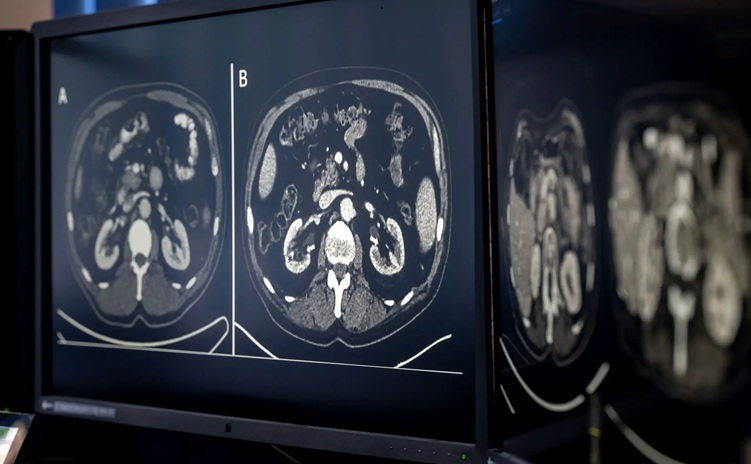
AI-Based CT Scan Analysis Predicts Early-Stage Kidney Damage Due to Cancer Treatments
Radioligand therapy, a form of targeted nuclear medicine, has recently gained attention for its potential in treating specific types of tumors. However, one of the potential side effects of this therapy... Read moreIndustry News
view channel
GE HealthCare and NVIDIA Collaboration to Reimagine Diagnostic Imaging
GE HealthCare (Chicago, IL, USA) has entered into a collaboration with NVIDIA (Santa Clara, CA, USA), expanding the existing relationship between the two companies to focus on pioneering innovation in... Read more
Patient-Specific 3D-Printed Phantoms Transform CT Imaging
New research has highlighted how anatomically precise, patient-specific 3D-printed phantoms are proving to be scalable, cost-effective, and efficient tools in the development of new CT scan algorithms... Read more
Siemens and Sectra Collaborate on Enhancing Radiology Workflows
Siemens Healthineers (Forchheim, Germany) and Sectra (Linköping, Sweden) have entered into a collaboration aimed at enhancing radiologists' diagnostic capabilities and, in turn, improving patient care... Read more


















